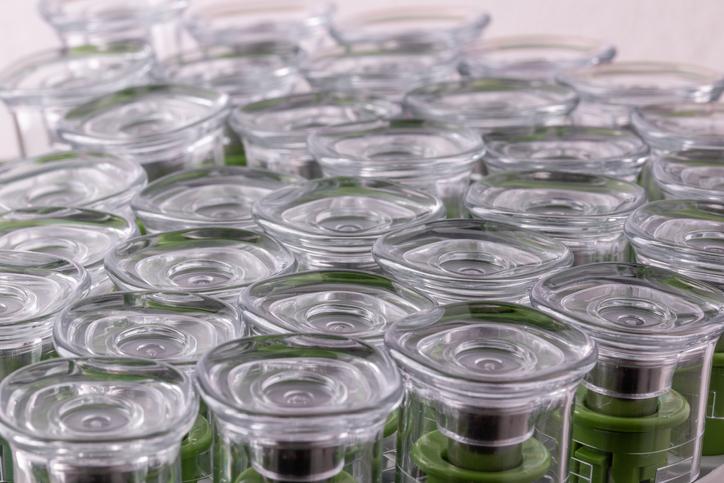Medical device plastic injection molding, and other plastic manufacturing techniques, are essential in meeting the changing demands of an industry always evolving. Plastics continue to see increased use in medical (and dental) applications by replacing traditional materials in both single-use and reusable devices. They offer lightweight strength, flexibility in design, ease of fabrication, durability, and cost-effectiveness compared to metals, glass, and other similar materials.
Plastic materials of all grades are serving as solutions across the medical industry. Commodity grade resins are essential for disposable products while engineering thermoplastics have roles to play in both disposable and non-disposable products. High performance thermoplastics are critical in developing implants, components for machines and equipment, and even surgical instruments.
Safety Concerns are at the Forefront
The advent of new stringent and powerful sanitizing agents has further increased the use of high-performance thermoplastics. More than 2 million medical devices are listed in the FDA’s Global Universal Device Identification Database (GUDID); 40 percent of those devices are approved as sterile — for users and patients. Material suppliers and device manufacturers (OEMs) have to show their products are free from contamination to a specified statistical level and be aware of how their material interacts with different sterilization processes.
Besides meeting strict quality standards and regulations to be eligible for use in the medical industry, thermoplastic materials also need to withstand pharmaceuticals and disinfectants in addition to sterilization without losing mechanical performance. They also need to be readily and easily processed, in order to account for geometry concerns centered on minimally invasive devices or accurately fitting connecting parts.
For the manufacturers of medical products, this all adds up to a host of pressures as they try to develop innovative products to better serve patients.
Fortunately, Ensinger has a wide range of medical grade materials to give designers options to develop innovative medical products, which provide safety and added value. At Ensinger Precision Components, we use different manufacturing methods — such as medical device plastic injection molding, extrusion, machining, and more — to offer the highest number of choices to produce the product.
Solutions for Every Business: Ensinger Precision Components serves a wide array of technically-demanding industries, from aerospace to medical, and more.
Medical Device Plastic Injection Molding Solutions
Due to the robust Ensinger portfolio of medical grade plastics, a number of innovative solutions are available to serve the needs of the medical industry. Here’s a quick examination of four such ways medical plastics can and have been used to make a difference for patients.
Sterilization Resistant Plastics
Many medical products such as surgical instruments are used again after being intensively cleaned, disinfected, and sterilized. Ensinger medical grade materials have excellent sterilization resistance to the commonly used methods, such as:
- Steam autoclave
- Hot air
- Plasma
- Gamma Radiation
- Formaldehyde
- Ethylene Oxide
Biocompatible Plastics
Ensinger Medical Grade semi-finished plastics are generally tested according to ISO 10993 for their intended use on stock shape. By definition, semi-finished products are not medical or pharmaceutical products, but pre-products used for their production.
As there is no standardized requirement to evaluate the biological suitability of semi-finished products, Ensinger has made its own selection from the wide spectrum of different biocompatibility tests contained in ISO 10993 and USP Class VI. This is intended to provide our customers with the greatest possible assistance with the risk evaluation and approval process.
Opaque Plastics
Engineering plastics do not appear clearly or distinctly on x-ray or fluoroscopy imaging unless they have been modified in some way to make them more opaque than the surrounding tissue and bone. Additionally, healthcare professionals also find it beneficial to clearly tell the difference between the surgical apparatus being used, and the surrounding bone and tissue being examined or repaired.
Ensinger’s medical grade materials provide options for both issues. TECAPEEK MT XRO (PEEK) and TECASON P MT XRO (PPSU) are medical-grade plastics with good visibility and radiography. A contrast medium added to the standard TECAPEEK MT and TECASON P MT lines permits clear visibility of components under fluoroscopy and X-ray radiation.
Low Density Plastics
A growing number of medical operations and procedures require increasingly effective instruments that are also easy to handle. Ensinger medical grade materials have a low specific weight, resulting in significant weight savings in comparison to metal instruments. This allows for easier manipulation of the instruments, which is a necessity in a number of procedures.
Low Friction Plastics for Industrial Use: Are low friction plastics right for your business? Learn more about the advantages of PTFE, PEEK, PI, and PPS materials here.
Ensinger Precision Components Delivers Medical Device Plastic Injection Molding and More
Thermoplastics continue to be adopted for medical industry needs because of the versatile nature of the material, and the variety in production methods available. Ensinger Precision Components, together with Ensinger support, provides the expertise and high-quality medical grade material portfolio needed to execute a wide range of challenging applications that always serve patient safety.
With more than 80 years of experience in high performance thermoplastics, Ensinger Precision Components designs and manufactures solutions that exceed your requirements and expectations. Our complete suite of plastic manufacturing capabilities means we’re equipped to handle any challenge and have the experience needed to properly work with any class of thermoplastics. Our dedicated quality management system, global reach, and focus on the traceability and compliance regulations of the medical industry ensure that our plastic manufacturing capabilities will meet the exacting standards called for.
